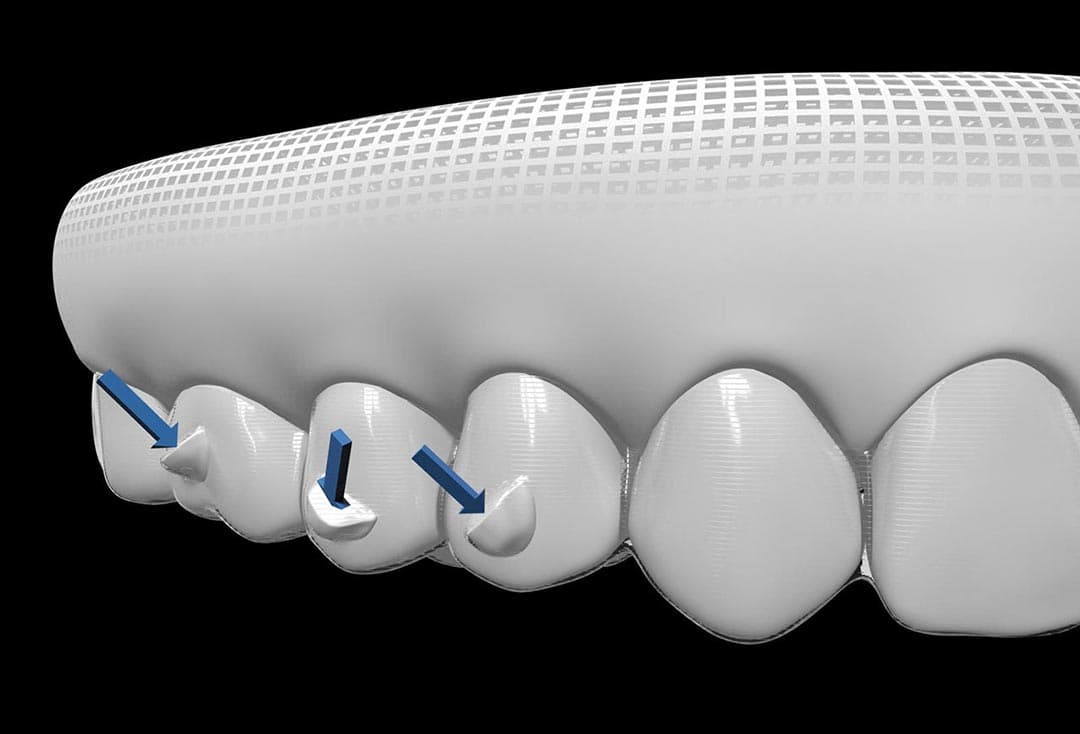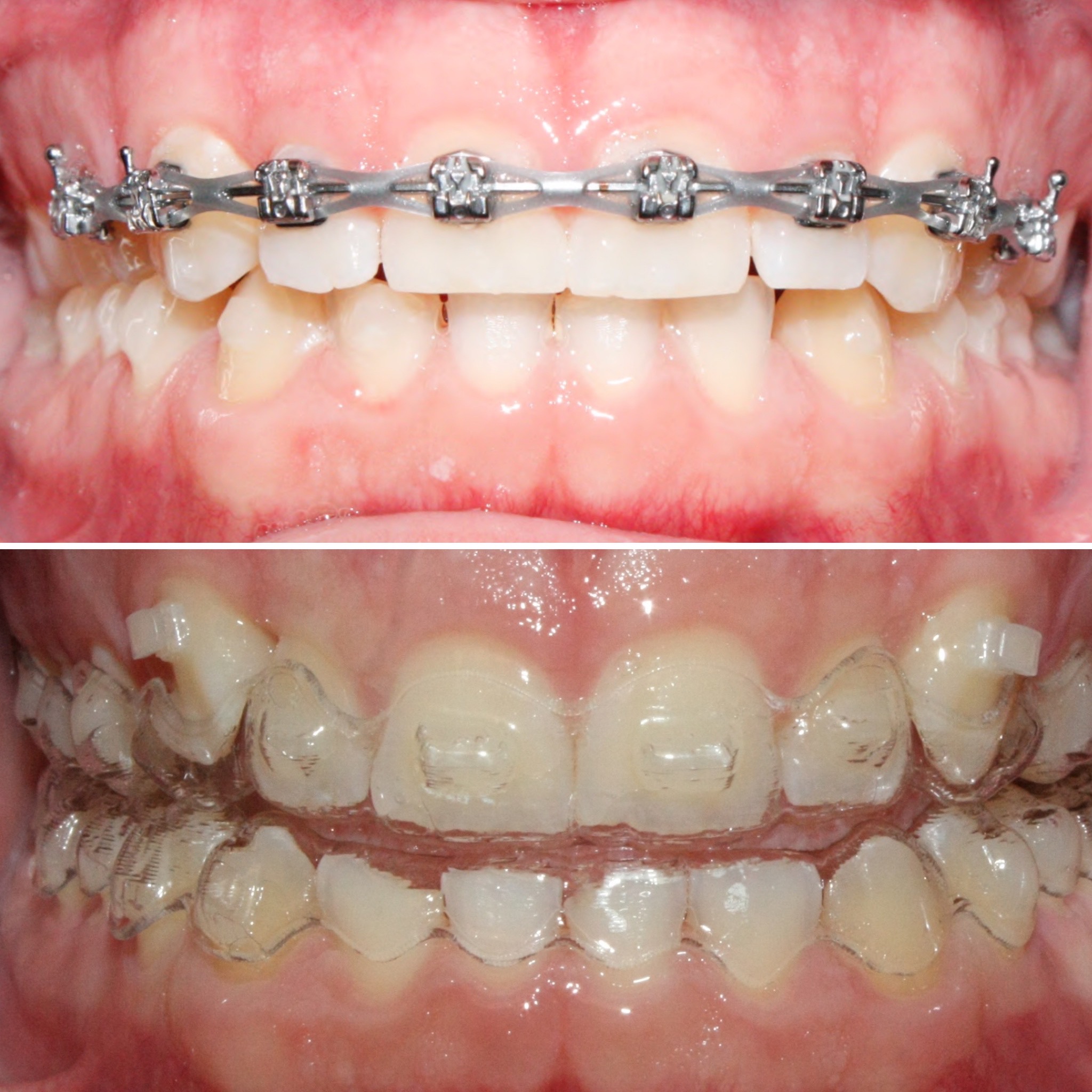Invisalign vs. Conventional Braces: Which Option Is Right for You?
When considering orthodontic therapy, the choice between Invisalign and typical dental braces offers a number of crucial variables that warrant careful assessment. Invisalign uses a discreet option with removable aligners, while conventional braces offer an extra noticeable yet efficient service for serious misalignment.
Overview of Therapy Options

In comparison, standard dental braces consist of steel braces and wires that are bonded to the teeth. This technique uses constant pressure gradually to achieve alignment. While effective for complicated orthodontic issues, standard dental braces need normal gos to for adjustments and can pose challenges in keeping dental hygiene as a result of the trouble of cleaning up around cords and braces.
Both choices have their benefits, and the option often pivots on specific dental problems, way of life preferences, and person conformity. Ultimately, getting in touch with an orthodontic expert is important for determining one of the most suitable treatment plan customized to specific needs. Understanding the nuances of each alternative can significantly influence the overall success of orthodontic treatment.
Visual Factors To Consider
A considerable variable affecting the option between Invisalign and traditional dental braces is the visual appeal each treatment provides. Invisalign aligners are crafted from clear plastic, making them virtually invisible when used. This discreet appearance is specifically attracting grownups and teens that may really feel uncomfortable about their orthodontic treatment. The ability to keep a natural smile throughout the positioning process can substantially enhance the patient's self-confidence in professional and social settings.
On the other hand, conventional braces include metal brackets and cords, which can be much more noticeable. While improvements in orthodontic technology have resulted in the development of smaller braces and colored elastics, standard dental braces still keep a more obvious account. For some people, the visibility of dental braces might discourage them from seeking required therapy.
Ultimately, the option in between Invisalign and traditional dental braces might pivot on personal preferences pertaining to aesthetics. Patients that focus on discretion commonly lean toward Invisalign, while those that are less worried concerning presence may go with typical braces. Recognizing the visual effects of each alternative is critical for making a notified decision that aligns with one's lifestyle and choices.
Convenience and Convenience

In terms of comfort, Invisalign aligners are removable, making it possible for people to enjoy their favored foods without restriction and preserve optimum oral health. Cleaning my sources and flossing are simplified, as the aligners can be secured throughout these routines, whereas typical dental braces need cautious maneuvering around brackets and wires.
In contrast, standard dental braces require routine modifications, making them much less practical for those with active routines. Generally, the convenience and comfort of Invisalign make it an attractive choice for many individuals looking for orthodontic treatment.
Therapy Duration and Efficiency
While both Invisalign and standard braces are effective in correcting dental imbalances, the period of therapy can differ dramatically in between both alternatives. Normally, Invisalign treatment can take anywhere from 12 to 18 months, depending upon the intricacy of the case. The clear aligners function by progressively changing teeth right into their preferred positions, and normal follow-ups with an orthodontist aid guarantee progress remains on track.
On the other hand, traditional braces commonly need a longer commitment, typically varying from 18 months to three years. This is due to their fixed nature and using brackets and cords, which can be a lot more efficient for extreme imbalances and complicated cases (Invisalign). The treatment efficiency of conventional dental braces is well-documented, as they permit exact adjustments and greater control over tooth activity
Eventually, the choice in between Invisalign and conventional braces might pivot on both the awaited therapy duration and the certain dental concerns at hand. Consulting with an orthodontist is vital, as they can provide customized recommendations based upon individual requirements, making certain the chosen approach straightens with wanted timeframes and results.
Expense Contrast and Insurance Options
Cost plays a significant function in the decision-making procedure for individuals considering orthodontic therapy, whether choosing for Invisalign or conventional braces. Usually, the price of Invisalign ranges from $3,000 to $8,000, he has a good point while traditional braces normally cost between $2,000 and $6,000. Aspects affecting these prices include the intricacy of the case, the period of treatment, and geographical place.
Many oral insurance policy strategies offer partial insurance coverage for orthodontic therapies, but the specifics can vary extensively. Usually, typical braces may be much more regularly covered by insurance coverage strategies contrasted to Invisalign, which some insurance providers categorize as a cosmetic treatment.
Furthermore, a number of orthodontic practices use adaptable payment strategies, making both treatment choices extra easily accessible. Patients should ask about potential funding options and price cuts for in advance payments. Examining the complete price, including insurance benefits and layaway plan, is essential for making an informed decision that aligns with both aesthetic choices and spending plan considerations.

Conclusion
In recap, the choice between Invisalign and standard dental braces depends upon multiple variables, including visual preferences, convenience, treatment period, and cost. Invisalign offers a very discreet, removable option that promotes dental hygiene and nutritional adaptability, while traditional braces may be better for complex dental problems and often come at a lower price point. Eventually, assessment with an orthodontist is vital to assess individual circumstances and identify one of the most suitable therapy option for attaining optimum dental alignment.
When considering orthodontic therapy, the selection between Invisalign and standard dental braces offers numerous important variables that warrant cautious assessment.Contrasting Invisalign and conventional braces read here reveals distinctive therapy choices for orthodontic modification.While both Invisalign and typical dental braces are efficient in fixing oral misalignments, the period of therapy can differ substantially between the two alternatives.Cost plays a considerable duty in the decision-making process for people considering orthodontic treatment, whether choosing for Invisalign or standard braces.In recap, the option between Invisalign and standard dental braces hinges on numerous factors, including visual choices, convenience, therapy duration, and cost.
Comments on “The Expense of Invisalign: Understanding the Investment in Your Smile”